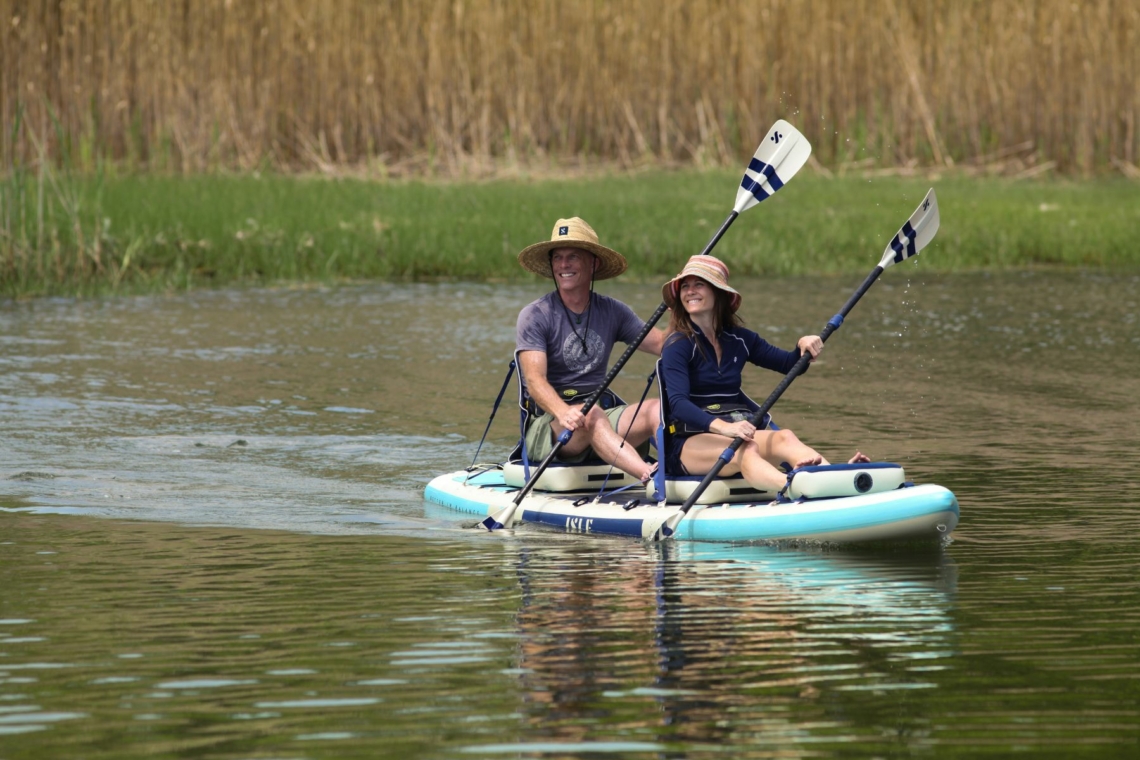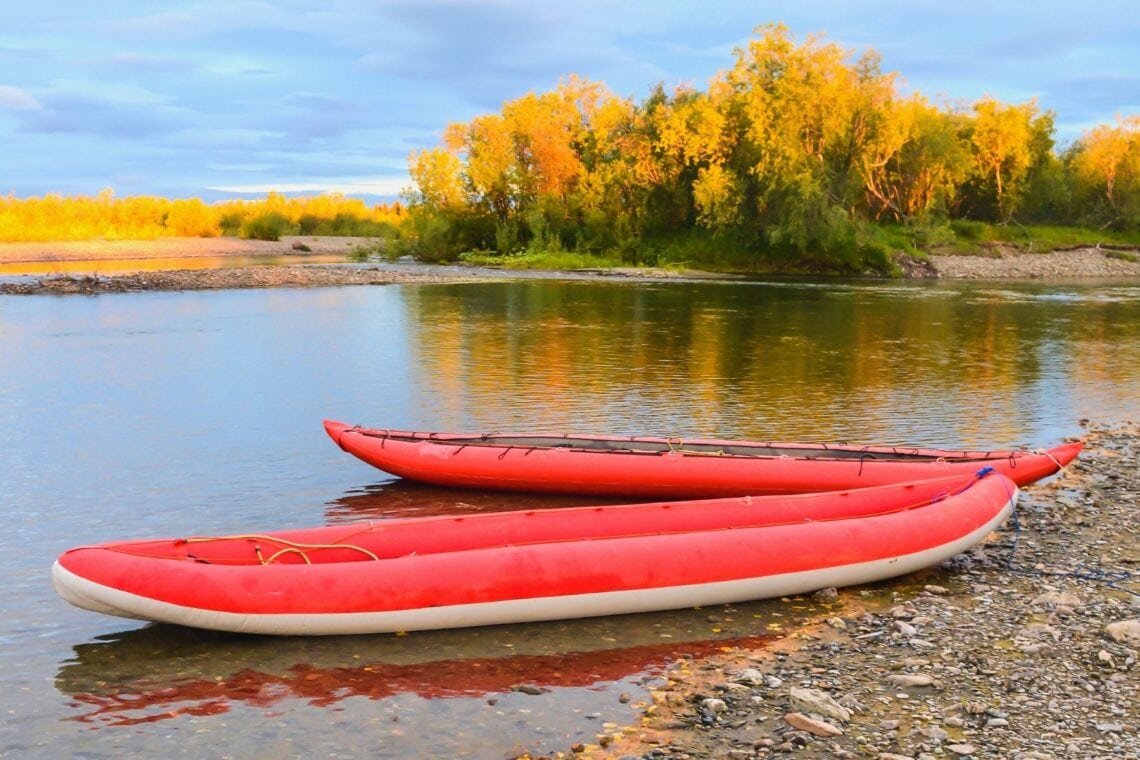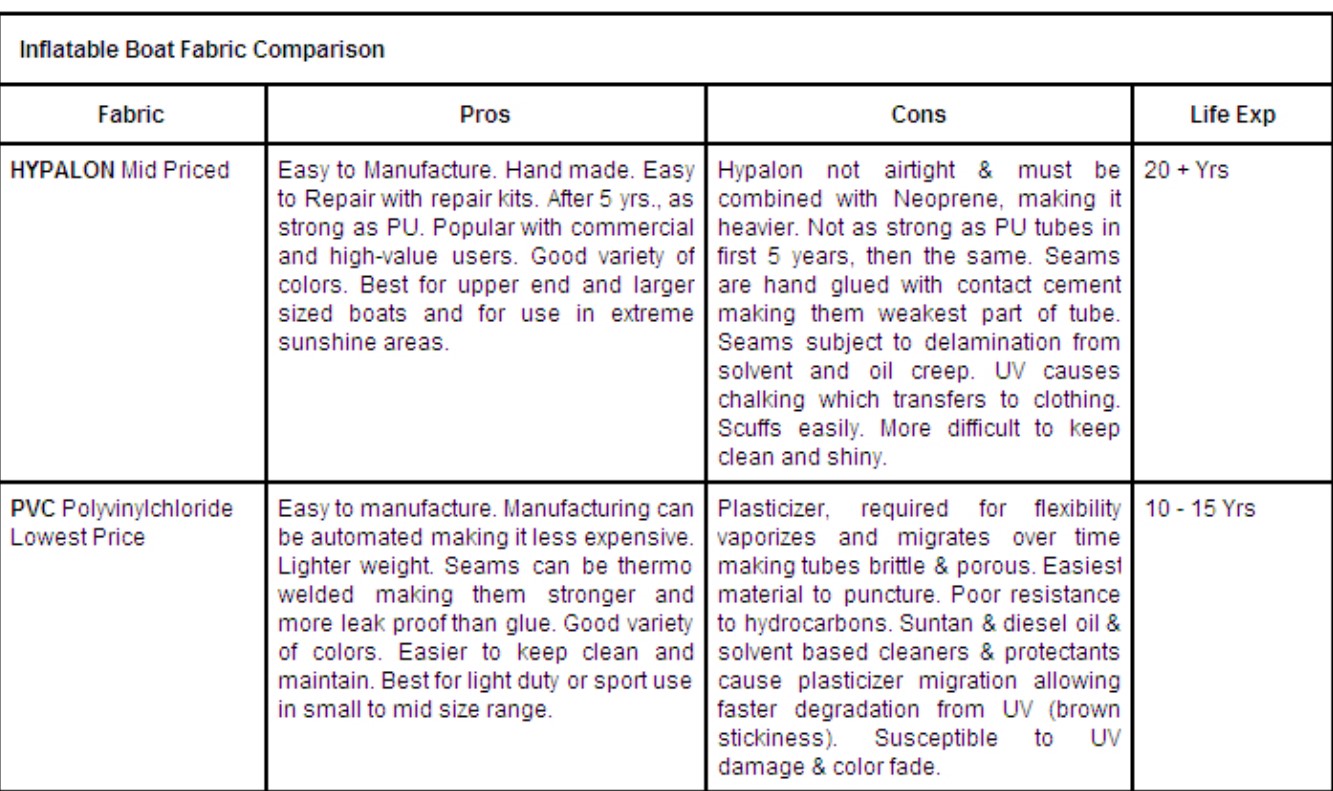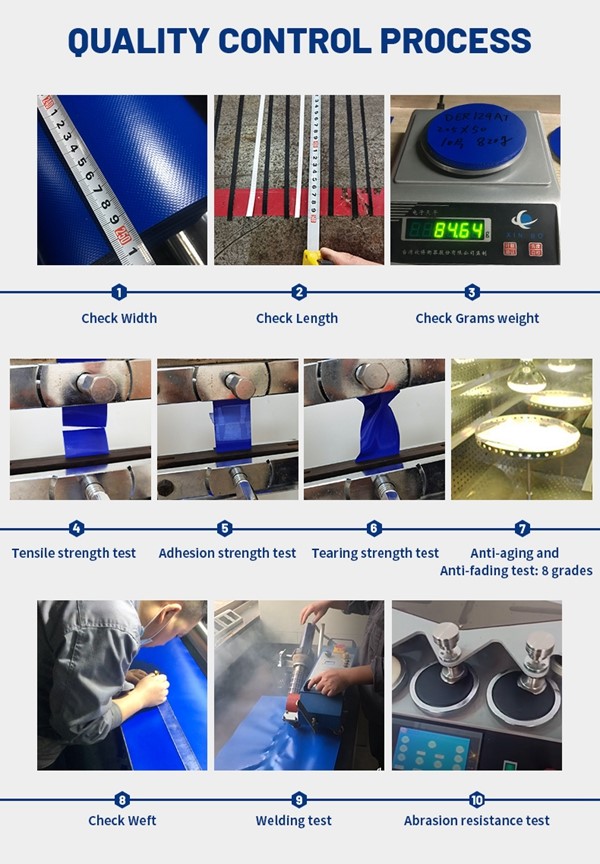How to choose inflatable KAYAKS Fabric
How to choose inflatable KAYAKS Fabric
I: What are the types of inflatable KAYAKS Fabric

Inflatable KAYAKS fabrics mainly divides into 3 different categories: Polyvinyl Chloride (PVC) fabrics, Hypalon fabrics or Polyurethane (PU) fabrics. All 3 boat fabrics are made by a coating polymer (PVC, Hypalon or PU) together with a supporting fabric; polyamid (Nylon) or polyester. All boat fabrics can be found with both types.
In the production of the final fabric the polymer is added to the supporting fabric either by extrusion or by a coated hot roller. When adding the polymer with a coated hot roller the tear strength of the fabrics is considerably higher than that of fabrics made by extrusion.
II: What is PVC fabric for KAYAKS Fabric
PVC: This is a plastic coating that is chemically known as polyvinyl chloride and is applied as a sandwich coating to polyester or nylon fabric. PVC is not a flexible material in its simple state and requires an additive to make it pliable and to be utilised as a coating to the base fabric.
Older PVC fabrics gained a reputation for the plasticising additive degrading over time due to exposure to ultra-violet light (UV), which made the PVC brittle and lead to cracking. Modern advances have significantly addressed this issue and quality PVC fabric manufacturers provide 10 year+ UV guarantees on their marine grade fabrics.
A PVC tube is the cheapest production material and can last for up to 15 years and is now used in most mass-production boats as the joints can be rapidly welded using thermal or high-frequency welding. They can also be glued, making repairs quick and simple.

III: What is Hypalon fabric for KAYAKS Fabric
Hypalon: This is a synthetic rubber coating onto polyester or nylon fabric and usually with a neoprene coating on the back of the fabric. The rubber coating is very hardwearing and can last for over 20 years if cared for by keeping your boat clean and applying a UV conditioner.
Hypalon joints are glued by butting the fabric together and applying glued cover strips or tapes over the seams, or the sections can be overlapped and glued. Hypalon fabric is considerably more expensive that PVC but is a similar cost to good quality PU fabric. Hypalon is manufactured in a wide range of colours and textures.

IV: What is PU (Polyurethane) fabric for AYAKS fabric
PU is the relatively ‘new kid’ on the fabric block. There is independent test evidence to support quality PU manufacturers’ claims that PU has superior airtightness than Hypalon fabrics, and also has high levels of wet and dry abrasion resistance combined with high-tensile strength. The fabric price is comparable to good quality Hypalon fabric but considerably more expensive than PVC fabrics. Good quality PU is designed to last for up to 15 years, but there are earlier examples that are still in use after 20 years+. PU fabric is currently manufactured in a limited range of colours, compared to the wide range of colours available with Hypalon and PVC fabrics.

V: How to choose inflatable KAYAKS fabric
PVC advantages and disadvantages:
Advanatges: inexpensive. The production of PVC fabric is easier than when using both Hypalon® or Polyurethane.
Less Expensive
Stiffer material
Less flex in the boat in the boat in harder whitewater
Often have drop stitched floors which is great for standing and casting when angling
Disadvantages:
not particularly durable, can crack when rolled in cold temperatures, tend to be mass produced so these boats are known for quality issues.
A cheaper material than Hypalon® and Polyurethane has a short lifetime when exposed to sunlight (UV).
Contains chlorine
The strength and the ability to resist tear and wear is radically poorer than that of Hypalon or Polyurethane.
Hypalon fabric advantages and disadvantages:
Advantages:
More supple material
Smaller roll/pack size
Generally lighter overall
Better UV resistance
Longer lasting material
Better abrasion resistance
Better chemical resistance
Typically carry a longer warranty than PVC rafts
Unaffected by extreme temperatures (ie. when stored in the cold over winter)
Easy to roll, relatively easy to field repair, and the material has a long life.
Hypalon shows a good resistance when exposed to sunlight (UV) and chemicals.
Hypalon is considered the second-best material in manufacturing pontoons. More abrasion and puncture resistant than PVC, but less than urethane.
Disadvantages:
The fabric is more expensive compared to PVC.
glued together (instead of welded) so it can come unglued sometimes.
Has a porous surface and a tendency of getting scratched, dirty and dull.
When used in production the Hypalon fabric is not as technically demanding a material as Polyurethane.
Contains chlorine.
VII: Comparison among the different sport boats fabric


VIII: About DERFLEX

Although there are some pretty major differences in the 3 materials, they are both durable and well suited for the rigours of sport boats.
Derflex is one of the professional raft material manufacturer in China with experience over 20 years. we focus on manufacturing and exploring different raft materials.
Our inflatable fabric for sport boats advantages: Wear resistance, low temperature resistance -35 ℃, still tear resistance; Anti UV, Anti sharp puncture.
Our team would love to chat further about these materials or any other raft related questions you have. Check out our contact info below for more details. Welcome to reach us at Ann Li (What”s APP&Wechat): +86-187-0192-0943 E-mail: ann@derflex.com